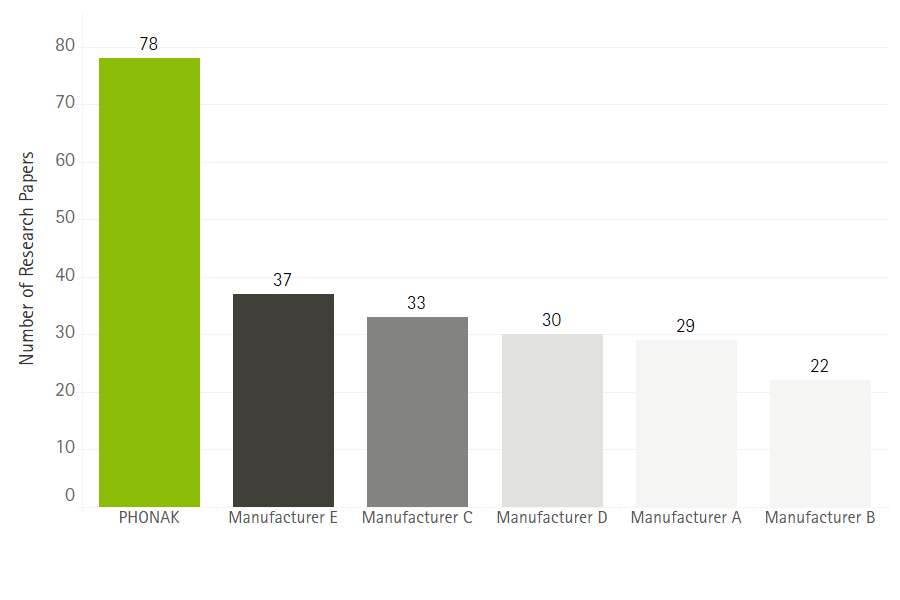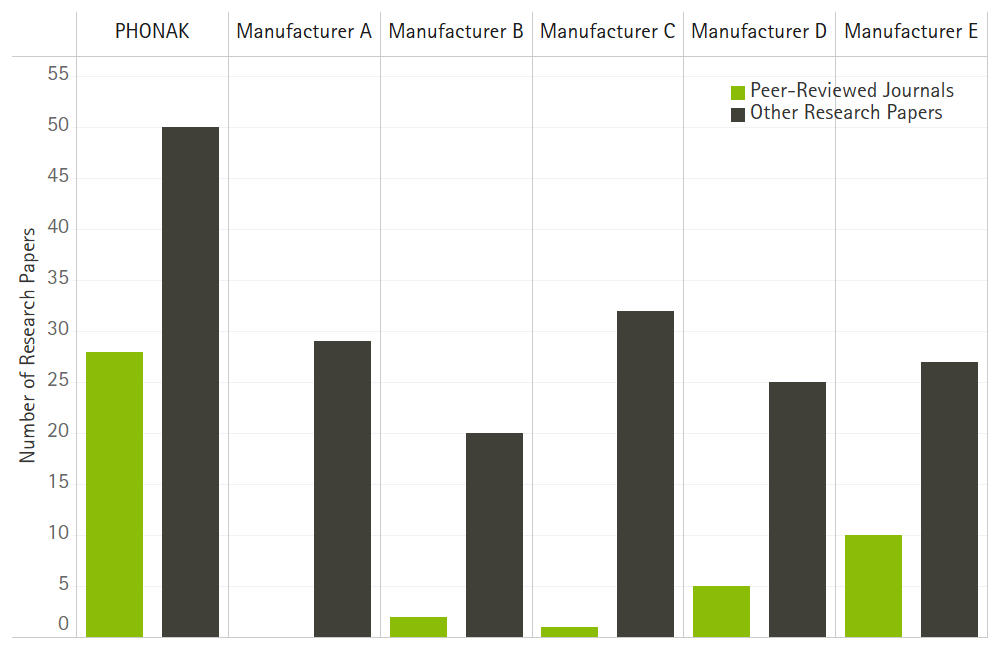
How 6 hearing aid brands compare when it comes to evidence
A recent independent analysis looked at the number of freely accessible evidence available from six major hearing aid brands. The findings shed light on Phonak’s commitment to research.
How many times have we watched an advertisement and heard about how fantastic a new product is and what amazing benefits we will get from using it?
I think many of us have been drawn into making purchases based on the claims the advertisement makes, whether it be flawless skin, best taste, or longest-lasting battery. Sometimes these purchases are met with disappointment. Come on, I can’t be the only one with a collection of shampoo bottles in my bathroom, all of which said they would make my hair shiny and healthy but didn’t?!
At Phonak we are constantly innovating, and research is a key part of that. We want to make sure that our technology is backed up by evidence. This means we carry out research on our new technology to prove it does what we say it does. We want you to feel confident in the technology you are fitting to your clients.
Evidence comes in many forms
Evidence behind hearing technology can come in many forms; peer-reviewed journal articles, trade journal articles, field study articles, scientific posters… A common resource for obtaining research papers is the professional websites of hearing aid brands.
They provide quick and easy access to some of the latest findings about their technology, and clinical best practices. While easy access is very important, the quality and credibility of scientific research should also be considered. Articles published in independent journals are generally considered by the scientific community to have greater credibility weighting than white papers, which are typically researched, edited, and published by the hearing aid brand themselves.
Evidence across brands – there is a difference
An independent analysis looked into the number of freely accessible evidence available from six major hearing aid brands. It identified the total number of research papers on their professional websites plus two trade journals, Audiology Online and Hearing Review.
Out of the 229 total research papers identified across the websites and trade journals, 78 (34.1%) of these were available from Phonak (Figure 1).

High quality evidence is crucial
The distinction between independent peer-reviewed journal articles and other research-related papers is important in terms of quality. In the hearing sector, independent peer-reviewed journals publish novel scientific information, subject to high levels of scientific rigor. Hence, they are regarded as providing a superior quality of research evidence than the other document types identified and counted in this analysis.
The analysis showed that Phonak had the highest number of independent peer-reviewed journals linked on its website, available to hearing care professionals (Figure 2).

Overall, these findings suggest that Phonak offers more total research evidence for hearing care professionals than five other major hearing aid brands (through their website and two trade journals). We encourage you to read this evidence in order to feel confident about the technology you are fitting to your clients.

